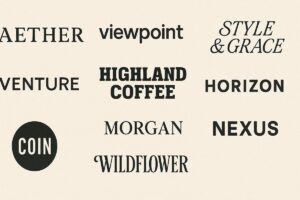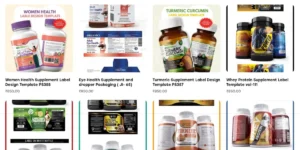In 2025, luxury isn’t just about designer logos or five-star hotels—it’s about how you sleep. With more consumers investing in their personal wellness space, luxury bedding brand are booming—especially direct-to-consumer (D2C) ones that cut out the middlemen and deliver high-end comfort straight to homes.
But launching a D2C bedding brand takes more than thread count. It takes thoughtful sourcing, trust-building branding, and packaging that feels as soft and safe as the sheets inside.
Here’s what you must know to build a sleep-first, comfort-forward brand that people trust, love, and re-order.
1. Sourcing: Start With What’s Under the Covers
Luxury bedding begins with luxury materials—and modern buyers care where those materials come from.
Top fabric choices:
- Supima cotton – Premium American-grown cotton with long fibers
- Egyptian cotton – Known for ultra-softness and durability
- Bamboo lyocell – Cooling, hypoallergenic, and eco-friendly
- Belgian flax linen – Textured, breathable, and relaxed-luxury feel
Partner with mills or manufacturers that:
- Offer certifications (GOTS, OEKO-TEX, Fair Trade)
- Are open to small-batch production for new brands
- Can support custom weaves or dye jobs
💡 Tip: Use sourcing as part of your story. “Woven in Portugal. Designed for sleep-obsessed people everywhere.”
2. Branding That Feels Like Bedtime
Your brand should feel like the first deep breath after a long day—calm, clean, and comforting.
Key elements of a sleep-forward brand:
- Name: Soft, serene, or story-based (e.g., Looma, Sunday Sheets, Hush)
- Color palette: Off-whites, earthy taupes, light greys, muted sage
- Tone of voice: Kind, knowledgeable, unhurried
- Logo: Minimal, spaced-out lettering, rounded edges
Your website, social media, and packaging must all say:
“We take your rest seriously—and beautifully.”
3. Packaging That Reflects Comfort and Trust
Bedding isn’t just bought—it’s felt. So your packaging should reflect:
- Tactility
- Cleanliness
- Luxury without waste
Essential elements of premium bedding packaging:
- Rigid magnetic box or matte-finish foldable carton
- Natural cotton or muslin drawstring bags for sheets
- Embossed logo and soft-touch lamination
- Insert card: “Welcome to better sleep.”
- QR code linking to care instructions and washing tips
Consider adding:
- Lavender sachet or scent tab
- Sample fabric swatch of your duvet or pillow range
- Subscription card with “Sleep again, soon.”
First impressions matter, especially when a customer is trusting you with their most personal space.
4. D2C Sales Strategy: Soft Launch, Strong Feedback
Start with a limited product line:
- 1 sheet set
- 1 duvet cover
- 2 pillowcase sizes
- 1 reusable tote or care pouch
Launch steps:
- Build hype with a waitlist (email + SMS)
- Send free or discounted sets to lifestyle & interior influencers
- Create educational content (e.g., “Percale vs. Sateen”)
- Offer bundles with built-in value (e.g., “The Sleep Starter Kit”)
Use customer feedback to adjust:
- Fit sizing
- Fabric performance
- Packaging experience
- Content clarity
5. Learn From These D2C Bedding Brands
1. Brooklinen
⭐ Industry benchmark for modern luxury
- Simple packaging with bold typography
- “Unbox better sleep” narrative
🔗 View on Amazon
2. Ettitude
- Soft colors, minimal packaging, reusable bags
- Carbon-neutral brand story
🔗 View on Amazon
3. SleepyCat (India)
⭐ D2C comfort champion
- India-based, offers clean unboxing and great UX
- Hybrid of affordability + minimal luxury
🔗 View on Amazon
4. Parachute Home
⭐ California-based soft goods brand
- Earth tones, soft-sell content, no harsh fonts
- Heavy focus on calm lifestyle imagery
🔗 View on Amazon
5. Wakefit Bedding Line
⭐ India’s rising D2C player
- Focuses on comfort + affordability
- Uses pouch packaging and solid inserts
🔗 View on Amazon
Final Thoughts
In 2025, successful bedding brands don’t just sell comfort—they sell confidence in comfort.
By sourcing ethical fabrics, building a brand that feels restful, and packaging products with purpose and emotion, your D2C bedding brand can become a nightly ritual, not just a purchase.
Because when your product helps people sleep better, you’re not just in e-commerce—you’re in emotional design.







